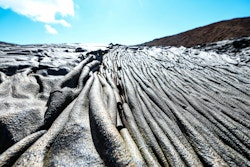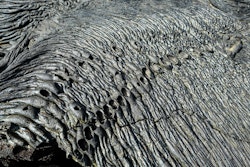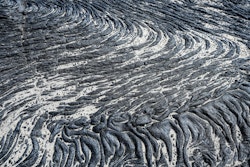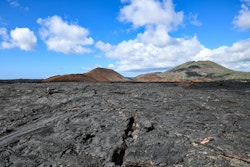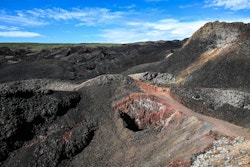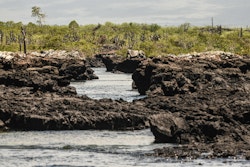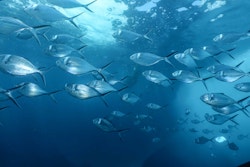The Galapagos, an archipelago with a unique geology
The major islands of the Galapagos archipelago are made up of several hundred volcanoes, some of which are still active today. Located 1 000 km west of the South American continent, the islands were never connected to it, a hot spot being at the origin of their formation. Katia Nicolet, our onboard scientist, explains how they rose from the ocean.
The origin of a volcanic archipelago
The 127 islands, islets and rocks that make up the Galapagos archipelago are located off the coast of Ecuador and are geographically closed to the Pacific Ring of Fire, but their geological origin is very different from others volcanic islands such as the Indonesian archipelago.
The volcanoes of the Galapagos are the result of a moving tectonic plate (the Nazca Plateau) passing over a fixed hot spot in the Earth's mantle. A hot spot is a place where the Earth's crust is very thin, allowing magma from the mantle to rise to the surface and create volcanoes. This is also the type of volcanic activity that formed Hawaii.
Islands of different ages
The Nazca tectonic plate is moving eastwards at a speed of 2,3 inch/year and plunges under the American continental plate at the level of the Andes. Since the hot spot is fixed, and its activity repeated, but irregular for about ten million years, the Galapagos islands are formed and slowly move eastwards as they age. Ancient submerged islands are indeed found in the eastern part of the archipelago, with remains dating back nearly 11 million years (Ma), supporting this geological model of the archipelago formation.
The present islands are therefore of different ages, the oldest being those to the east, such as San Cristobal (2.5 - 4 Ma), and the youngest to the west, such as Fernandina (0.03 - 0.06 Ma). The older islands are also the most eroded, with more modest peaks (730 m for San Cristobal) than their more recent counterparts (1,476 m for Fernandina). All these differences in volcanic activity, age of the soil, and height of the landforms contribute greatly to the varied climate of the islands and therefore to the diversity of ecosystems and species that can be found there.
An impacted climate
The climate of the Galapagos is also extremely influenced by three ocean currents that flow through the islands: the cold Humboldt and Cromwell deep currents and a warm surface current from Central America. The cold deep-sea currents are the reason for the cooler and drier climate of the Galapagos.
Although this region lies on the equator, the average temperature is 24°C and it rains only 300 mm per year. For comparison, for the same latitude, the Ecuadorian coast receives over 1800 mm of rainfall in a year. The low rainfall is concentrated on the relief, mainly on the side of the prevailing winds, which sometimes results in two very distinct ecosystems on each side of the volcano: intertropical vegetation on the south side, and arid zones on the north side.
All these factors taken into account, explain the richness and diversity of the ecosystems present on the different islands of the Galapagos. The marine species are strongly influenced by the sometimes warm and sometimes cold waters of the different currents, which explains the presence of sea lions and penguins in a coral reef! It is the marine equivalent of seeing a moose or a polar bear in the middle of the savannah...
On land, the varied environments will also allow for a diversification of species which, somehow, will have survived the long journey from the continent. Over time, these species will adapt to a particular ecological niche, slowly distinguishing themselves from their ancestors by developing new characteristics: a wider beak, shorter wings, a longer tail, etc. And so, from generation to generation, populations become sufficiently distinct from each other to form new species, having continued their evolutionary path separately.
Geology and evolution of species
It was this evolution, on a shorter geological scale due to the young age of these islands, that greatly inspired Darwin in his theory of evolution during his passage on board the Beagle in 1835. And contrary to popular belief, it was not the finches that most inspired the renowned naturalist, but another bird species: the mockingbird. There are four species of mockingbird on four different islands, and each species has a specific beak shape, colouring and behaviour adapted to its ecological niche. Nevertheless, the similarities between the species, and their close resemblance to continental species, was what convinced Darwin that these species were not created by God, but rather evolved from a common ancestor.
The Galapagos is a wonderful example of how the geological origin influences the climate, ecosystems and species present, sometimes even inspiring discoveries beyond their formation.
